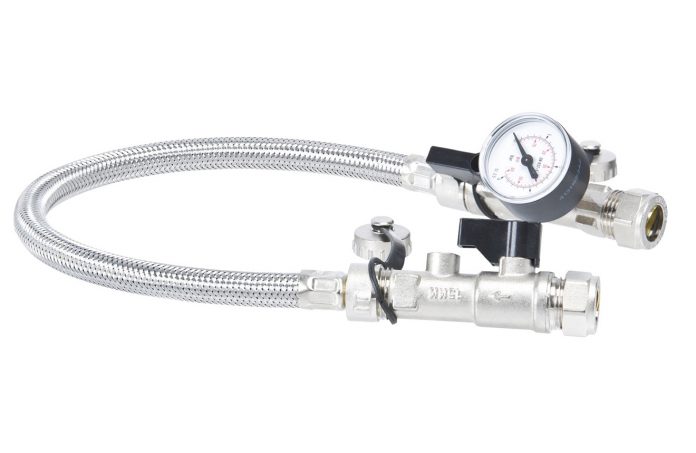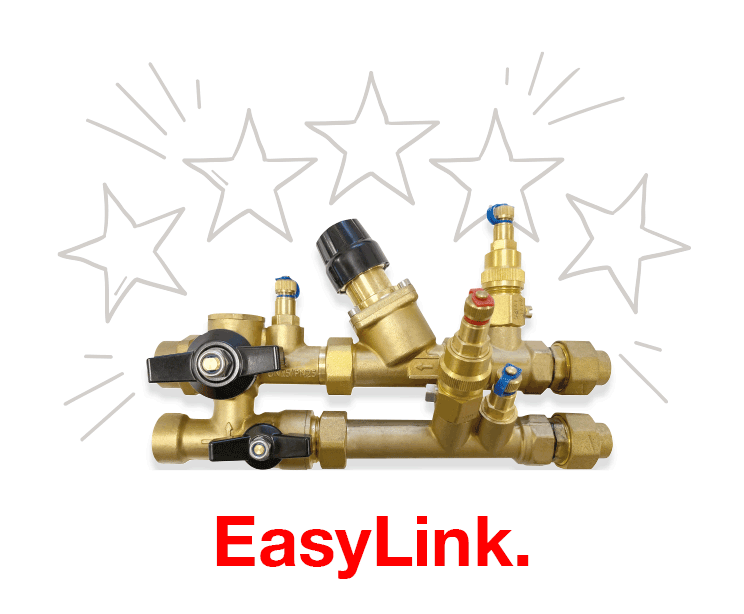With over 40 years of experience and a dedicated technical team, Altecnic has all the knowledge and resources to provide excellent advice on how and when to use certain products. The company offers several product options for filling loops to suit a variety of projects, with Altecnic and their stockists offering guidance and support to ensure plumbers and engineers make the best choice for their individual requirements.
What is it?
A filling loop is a piece of apparatus used in the filling and pressurising of domestic central heating systems (CHS). In apartment blocks with a centralised boiler plant, they are also used to fill and pressurise the secondary heating system of Heat Interface Units (HIUs).
Where should the filling loop be installed?
The filling loop is installed between the mains cold water supply inlet and the central heating return pipe in the boiler and HIU.
Should the filling loop be connected permanently to the boiler?
No. After the system has been filled and pressurised, the service valves must be closed, the system isolated and the flexible hose removed and stored until it is used again. The following good practice guidance is available in relation to temporary filling loops: Where a closed circuit heating system has fluid, which represents a slight health hazard because of the concentration of substances with low toxicity; including any fluid which contains ethylene glycol, copper sulphate solution or similar chemical additives, or sodium hypochlorite (chloros and common disinfectants), the installation of a compliant double check valve on the fill point connection to the supply or distribution pipe may be considered as acceptable backflow protection. Where a fill point connection incorporates a “flexible connection” when not in use, it is good practice for the hoses on these connections to be completely disconnected and removed.
However, a partial disconnection, only detaching one end of the hose, is equally acceptable providing that the disconnection is made between the hose and the backflow prevention device on the supply/distribution pipe.
Do all boilers have a filling loop?
A filling loop can be either part of the boiler itself, or it can be fitted close by it.
Is a pressure gauge required?
It would be beneficial. The pressure gauge measures the pressure in the heating system and is especially useful when the filling loop is installed away from the boiler or when the boiler or HIU does not have an integral pressure gauge. If the pressure is too low, the boiler will turn off and there won’t be any hot water. Alternatively, high boiler pressure causes unnecessary strain and the system could break down. Therefore it is imperative to measure the pressure effectively.
What is the maximum working pressure and temperature?
The maximum inlet pressure should be 10 bar and the maximum continuous temperature should be 85 degrees.
Why is the filling loop only temporary?
Legality. The requirement that the connection is temporary is because Water Regulations prohibit the backflow of water into the mains which risk contaminating it. The risk of contamination from a CHS is even greater because of the corrosion and sludge which can build up inside and potentially the presence of anti- corrosion and biocidal chemicals. A permanent connection to a CHS is therefore not permitted.
Can the filling loop be installed any way round?
No. When installing an external filling loop, care must be taken to ensure that it is installed the right way around, otherwise the check valve will prevent the system from re-filling.
The Altecnic ALT-ST0035 filling loop consists of a double check valve, a flexible hose with union connectors, sealing washers and a ball isolating valve with a 4-bar pressure gauge. Altecnic has taken the humble filling loop which includes a double check valve, isolation valve and flexible loop and has added the security of a pressure gauge, which as discussed earlier, is a beneficial addition to ensure the CHS is running correctly.
This can be pre-installed into the isolation valve, meaning that when isolated from the flexi loop and double check valve attached to the mains, it is exposed to the system pressure in the heating circuit. With this is mind, the ALT-ST0035 has been designed to be installed in areas that both engineers and home-owners can easily access easily without the need to disturb the boiler. This means that they can read the system pressure, check for pressure drop and, if needed, top up the system easily and quickly. Supplied as 15mm compression connections, the product is also incredibly simple for the engineer to install.
Chris Reilly, Country Manager for Ireland
T: +353 (0)85 2152 288
E: chris.reilly@altecnic.co.uk
Gary Swann, Northern Ireland Sales Manager
T: 07760 596727
E: gary.swann@altecnic.co.uk











